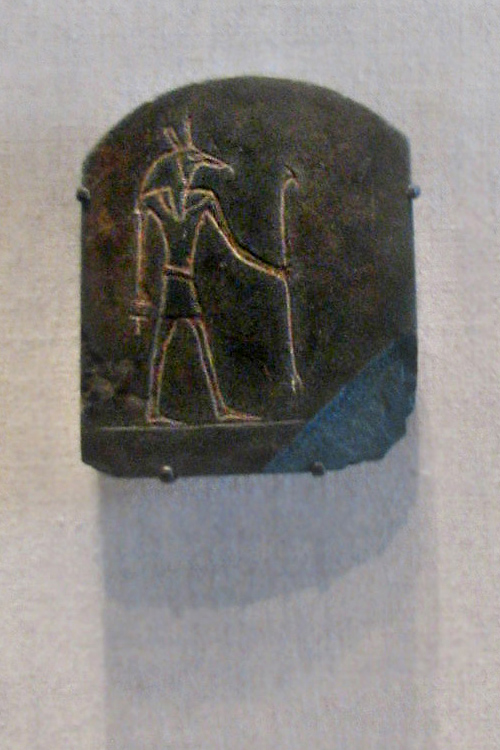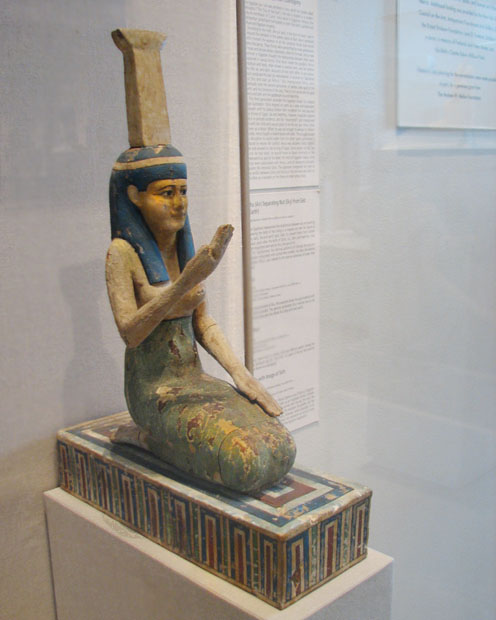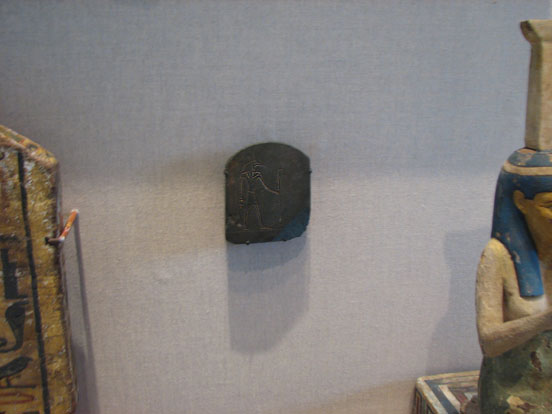
Stela with Image of Set
Slate, perhaps Late Period-Ptolemic Period, Ca 664-30 B.C.
Provenance not known, Brooklyn museum 16.580.187.
Gift of the Estate of Charles Edwin Wilbour
|
When I first saw the photo of this stela at the Setsightings.com website, I imagined it to be smallish, maybe six to eight inches, four at the smallest. However, I was in for a bit of a surprise when I at last saw it in person. I nearly missed it. I saw the fairly large statue of Nephthys:
 Nephthys Wood, painted, Late Period-Ptolemic Period, Ca 664-30 B.C. Provenance not known, Brooklyn Museum 11.681, Gift of Colonel Robert B. Woodward
 Why, it's the stela of Set!
But the full story doesn't only include execretian rituals, (though there's enough evidence of that, from Dendera, for instance). While the Denderians might have either been execrating Set as harbinger of evils or placating him as controller of evils, "At the same time Ombos and an obscure 'village of Seth' in the Fayyum may actually have venerated Seth as the chief local deity." "A Fayyum temple keeps among its collection of votive figurines a small image of Seth."_Religion in Roman Egypt: Assimilation and Resistance_ by David Frankfurter, pages 113, 114 "It is in the temples of the Dakhla oasis that the cult of Seth as protector- and fertility-god is most abundantly documented into the Roman period. At Deir el-Hagar a relief from the reign of Vespasian celebrated him as 'Lord of the oasis, who slays Apophis'; and at the temple of Tutu at Kellis Seth is the one who 'has slain Apophis in the prow of the barque [of Re].' A graffito at Kellis portray's Seth's local cult image, a winged figure spearing a serpent. Reliefs and inscriptions throughout the oasis reflect a Seth festival, an oracular cult image, and the god's strongly local significance. "In the Kharga oasis as well, in the court of the Amun temple of Hibis, "Seth, great of strength, the great god, residing in Hibis,' is represented in a large relief, sprearing the Apophis serpent."_Religion in Roman Egypt: Assimilation and Resistance_ by David Frankfurter, page 113 Although we don't know the story of who had this small stela, it was certainly someone who treasured it. Perhaps many other tiny treasures are waiting to be discovered. (And for those who feel so called, many more to be made in the future.) |


